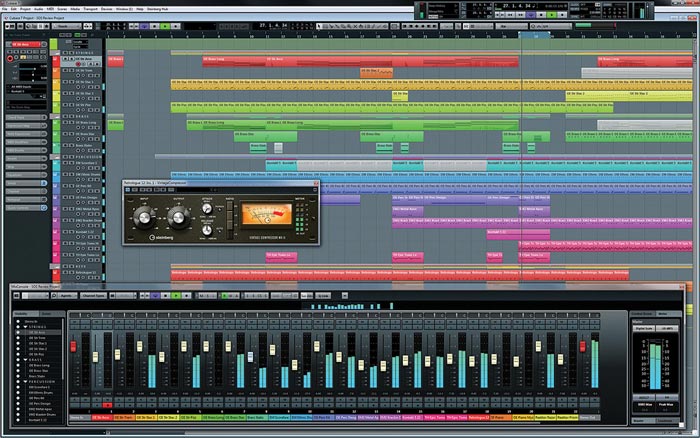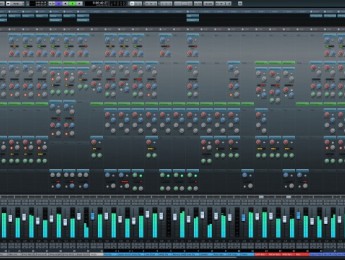
Even though they all exist as one MIDI Track, when I RETURN audio from the hardware, I can selectively route each DRUM to its own audio bus – or I can combine multiple drums to a pair of audio buses (as with the Tom-toms).īasically, MIDI is going to travel from your Cubase MIDI Tracks to the Motif XF tone generator, the audio created by the XF in response to this data will be returned to Cubase on multiple VST CONNECTION audio lanes that we will create. I can print these as discreet audio tracks. In a single pass with 16 audio buses available, I can route the Kick on FW1, the Snare on FW2, the Hihats on FW3, the Ride on FW4, the Toms to FW5&6, the Crash to FW7, the Cowbell to FW8, the percussion to FW9&10. I like to perfect the basic tracks as MIDI data, then at my leisure, I start to transfer, render, print the data as audio tracks and I can decide how I want to divide it. The flexibility to be able to go from a single MIDI Track of Drums to a separate audio track on each drum is what we are talking about here. The 16 bus audio outputs provided by the FW16E can be put to use in those projects where you are going to do very microscopic production work on your drums, for example. While some sounds will actually benefit from being recorded in stereo (those that are originally stereo), it makes no sense to record some other things in stereo and this External Instrument function will allow you to take advantage of the mono buses where and when you need/want them.

If I need to route the kick drum to its own audio track, why route it in stereo? You might want to separate drums in a case where you have additional effects (VST EFFECTS) processing that you might want to do prior to mixing down. This will facilitate routing individual drums, for example. As you will see in this article, by using the MIDI DEVICE MANAGER and the EXTERNAL INSTRUMENT function of Cubase, we will be able to route PARTS, not only in the odd/even stereo pairings but also as individual MONO sends when necessary, as well. The Motif XF Editor VST allows you to configure the 16 audio bus outputs in eight stereo pairs (only).

Why I, personally, like this External Instrument function is when it is combined with the FW16E (FireWire option) it gives you the most flexibility when it comes to audio routing/recording decisions. This means you can use track automation, Audio Mixdown and the FREEZE function (although it takes place in real time) that until now were just available for VSTi soft-synths created within the computer or by using the Motif XF's EDITOR VST. It allows you to create an audio pathway in the DAW so that you can address your external hardware with the same ease and flexibility you do VSTi within the computer environment. This is found in DEVICES > VST CONNECTIONS as one of the tabs.
Cubase 7 help full version#
The full version of Cubase has the ability to setup your hardware synthesizer as an “EXTERNAL INSTRUMENT”. see separate article (“IMPORT > Motif XF SONG”. Cubase can import SONG data from within an ALL data file). That is, if you originally recorded the data in the Motif XF sequencer, you will want to transfer that data so that the MIDI tracks are in Cubase. The source MIDI tracks for the External Instrument must be in CUBASE. (And although this article and it screen shots show the Motif XF (keyboard), the same can be used to configure the Motif-Rack XS or the Motif XS, using its dedicated Editor and/or the MIDI DEVICE MANAGER.

This is covered in the Steinberg documentation - I have included it below updated with specifics to help you setup for the Motif XF. (Of course, this all takes place with Cubase's advanced delay compensation, automatically).

Cubase 7 help series#
The External Instrument function is a VST CONNECTIONS feature found in the top-of-the-line version of Cubase series (Cubase 5, Cubase 6, and/or Cubase 7, 7.5) that allows you to route MIDI tracks played back from Cubase to an external hardware synthesizer, and then create a MIDI Device routing so that the returning audio of that external device can be captured in Cubase via the Virtual Studio Technology. If you have the full version of Cubase, here you will learn how there are even more advanced routing features available.


 0 kommentar(er)
0 kommentar(er)
